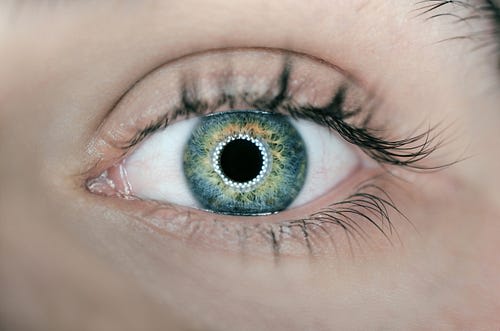
Claudia Wu.
Posted on May 21, 2020
Photo by Taras Shypka on Unsplash
Every time a human wants to interact with a computer, one need some kind of software that provides a user interface. This concerns desktop software, native mobile applications and websites. Information and content is visually processed in order to become legible and intelligible to the user. The average user has no idea about data and functions behind the scenes. Thus the only interface between him and the software features is the graphical user interface.
Importance of User Interface Design
User Interface (UI) and User Experience (UX) are currently popular buzzwords in the field of frontend development. The User Experience Design defines improvements of the overall user experience while interacting with the Software, e.g. number of clicks from the start page to the target action or the simplicity and clarity of the navigation. The User Interface Design focuses on the presentation and interactivity of the application , e.g. branding and fanciness. There is a fluent transition between the two — one can not work without the other.
If you want as many users as possible to use your application, you have to think about UI / UX Design. Thinkwik summerized the importance of UI/UX Design perfectly in his blog post:
The primary goal of any business is to increase its sales and increase the growth of the business. UX/UI Design plays an essential role in achieving this goal. The UX/UI Design of the application improves the user experience and customer satisfaction that ultimately helps increase the number of users of the specific application.
Reality of UI / UX Design
The ideal frontend team consists of programmers who mainly deal with functionality and communication with other systems, one or more UI Designers, one or more UX Designers and some stakeholders and users — depending on the project they are working on. If your team looks like this, you are doing well. Unfortunately frontend teams are not always composed like this. Sometimes there are no UI / UX Designers, sometimes the project is very small and so is the team, sometimes the UI Design is provided by an external agency or the customer thinks he doesn’t need a designer. The minimal team usually consists of at least one or more programmers. Thus the programmers learn how to develop a good user experience — or they don’t and the final product looks and feels like a website in the 1990's.
My Experience
I joined the minimal type of team several times. Me and my team mates implemented design details we liked most and I noticed that the UI / UX Designs of the final products felt not bad nor good. Interacting with the application felt uncomfortable. None of us could tell why because everything was logically structured. None of us ever dealt with visual design. We all developed tunnel vision.
I began to research extensively about designing user interfaces. I searched for logically comprehensible rules that I can simply implement in the existing project. I hoped to find 2 to 3 very small modifications that make all the difference. Instead I found about 20 heuristics I had to translate into specific changes. Most of the resulting changes felt counterintuitive to us whereas the users liked it. However the improvement wasn’t big enough and I wanted to know why my experience differs so much from the user’s one.
My Method
Whenever I face problems that seem intractable I put on my earphones, turn up the music and move the brain in a relaxed state of concentration. After a few minutes I return to my issue and can see the problem from a new perspective. So I applied this method on testing the user interface. Slowly I got an idea about the downside of being a programmer: The brain always asserts against the intuition. With loud music in my ears I suddenly noted the unintuitive frontend design. Besides, I developed some ideas about improving some design details for the first time.
Brain vs. Intuition
Every time a stimulus reaches the brain the same process is triggered: First it checks some reflexes and intuition. The brain takes for example a split second to decide if the stimulus is life-threatening. Afterwards it starts processing the stimulus on a logical level. Therefor the brain uses acquired knowledge.
Photo by Createria on Unsplash
Similar things happen when a user discovers a screen with his eyes: First it scans the user interface for colors and areas or icons it is familiar with and triggers some hardly noticeable feelings like “there is an important thing in the top right corner” (maybe a call-to-action button?), “there is something dangerous on the left” (a colorful ad?), “the page feels cool” (the main color could be blue) or “this element feels pretty familiar” (whatsapp, telephone or download icon?). Now the brain begins analysing and interpreting texts, borders, graphics and everything the intuition could not completely match. You realize that the borders you see optically separate content and the numbers after a phone icon are a phone number. The heading tells you that the page is about scientific articles.
The phone icon fits perfectly well with a phone number. The blue color scheme prepared you to the scientific articles topic. You do understand the content very quickly because your intuition noticed important details before. Or it didn’t — then your mind has to work harder and you feel increasingly annoyed.
The brain of a programmer
Programmers usually always think logically during their work hours. We develop algorithms, deal with big data, implement interfaces for network communication etc. Our brains don’t get a real chance to rest while working. This means that we analyse and interpret content much faster than the average consumer. We kind of skip intuition. And someone who skips intuition doesn’t consider a phone icon near a phone number nor using different stylings for different content. Adding styles, icons, graphics etc. feels over the top.
The good news: You can bring back your intuition by slowing down your mind activity. Develop your own method to get into a relaxed state. However it is tricky to get ideas to improve design details, even if you notice that something feels uncomfortable. You have to gain experience over time to master developing UI / UX design.
By the way: Creativity happens when you don’t think anything e.g. while taking a shower or watch raindrops running over a window. You can read more at Why We Have Our Best Ideas in the Shower: The Science of Creativity.
Any ideas or feedback?
I would like to know your thoughts and experience related to this topic. Please also leave your job title.
Do you like this post? Follow me on Twitter and don’t miss any future posts.

Posted on May 21, 2020
Join Our Newsletter. No Spam, Only the good stuff.
Sign up to receive the latest update from our blog.

